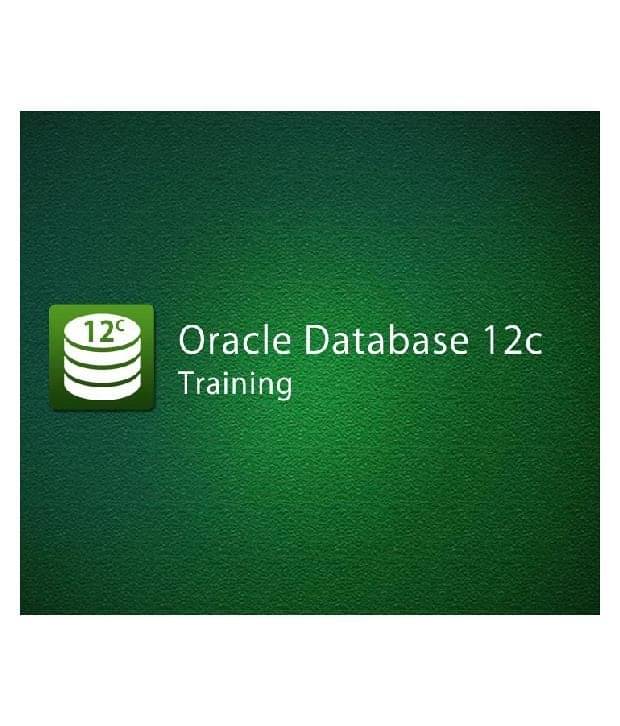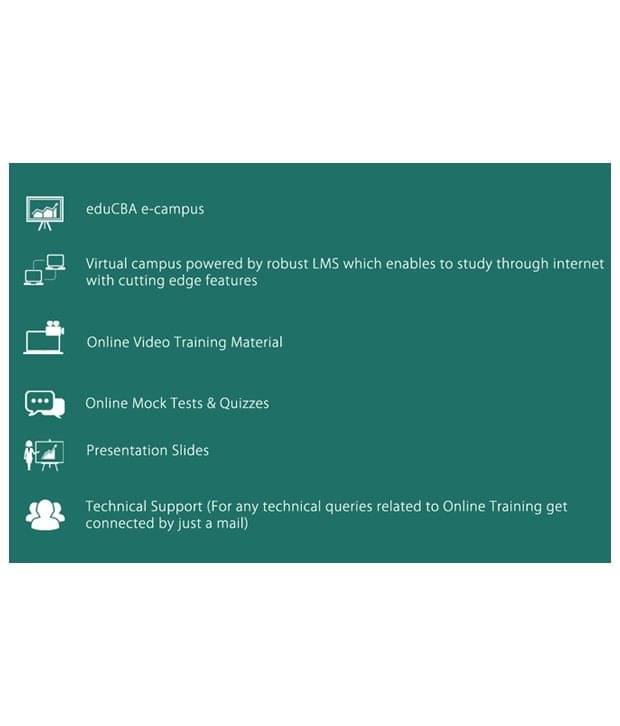Something went wrong. Please refresh the page and try again.
Something went wrong. Please refresh the page and try again.
Notifications can be turned off anytime from settings.
Item(s) Added To cart
Qty.0
Something went wrong. Please refresh the page and try again.
Something went wrong. Please refresh the page and try again.
Exchange offer not applicable. New product price is lower than exchange product price
Please check the updated No Cost EMI details on the payment page
Exchange offer is not applicable with this product
Exchange Offer cannot be clubbed with Bajaj Finserv for this product
Product price & seller has been updated as per Bajaj Finserv EMI option
Please apply exchange offer again
Your item has been added to Shortlist.
View AllYour Item has been added to Shopping List
View AllSorry! Oracle Database 12c Training Certified Online Course by eduCBA. Online Video Training Material, Technical support, Verifiable certificate. is sold out.



You will be notified when this product will be in stock

| System (Hardware/Software) Requirements | |
| Operating Software | Windows XP or Higher |
| Processor | Minimum P4 or Higher |
| RAM | 1 GB or Higher |
| Browser | Any |
| Recommended Internet Speed | Minimum 1MBPS |
| Supported Browser Plug-ins | Updated Flash Player, Update Java |
| Other Requirements | Speaker or headphone |
Detailed Product Description:
Oracle Database 12c introduces so many important new capabilities in so many areas database consolidation, query optimization, performance tuning, high availability, partitioning, backup and recovery. Oracle Database 12c introduces a new multitenant architecture that makes it easy to consolidate many databases quickly and manage them as a cloud service. Oracle Database 12c also includes in-memory data processing capabilities delivering breakthrough analytical performance. Additional database innovations deliver new levels of efficiency, performance, security, and availability. Oracle Database 12c comes in three editions to fit your business needs and budget: Enterprise Edition, Standard Edition, and Standard Edition One.
Oracle's new pluggable database feature reduces the risk of consolidation because the DBA can easily plug or unplug an existing database to or from a container database. There is no need to change any code in the application. When the user connects to a plugged database, the database environment looks exactly as if the user had connected to a traditional database. Further, plug-gable databases do lower resource consumption. Memory and processes are owned by the container database and shared by all pluggable databases, improving resource usage overall. It is also easy to unplug a database and convert the pluggable database to a traditional database if required. In addition, you can back up and recover pluggable databases independently of the container database; you can also perform a point-in-time recovery of a plug-gable database. Further, Resource Manager can be used to control resources consumed by a pluggable database.
In this course you will be learning about Oracle 12c Introduction, Multitenant, Installation, Quickstart, Data Modeler, Managing Plug-gable Databases, Redaction Management, SQL Developer, Testing and Debugging etc. topics are taught under the Oracle Database 12c course where you will be learning the course from scratch level to advance level with the new features of Oracle Database 12c
Course Curriculum (Structure):
Section 1: Overview of Oracle Database 12c
1
Launch
03:02
In this submodule , you will learn about the launch of the Oracle 12c product and various trends in database arena as well as major efforts in the development of this product.
2
Introduction
03:42
In this submodule , you will get introduced to the Oracle 12c product and its new "Plug into the Cloud" architecture.
3
Product Overview
12:13
This submodule will provide Product Overview and in-depth coverage of the major technical features of the product.
4
Challenge
03:53
This submodule will cover business and IT challenges and how they are overcome with Oracle 12c
5
Value
02:16
This submodule will present the value proposition provided by Oracle 12c in terms of features as well as training or learning paths for various roles and also Oracle certifications.
Section 2: Oracle Database 12c Multitenant
6
Redesign
08:41
In this sub-module you will learn about the future of computing and the considerations that went into the redesign of Oracle 12c Multitenant
7
Architecture
09:57
In this sub-module you will learn about Multitenant architecture in detail. We will cover the basic elements of the new concept and what had to be overcome to achieve this.
8
Features
08:46
In this sub-module we will cover the key features that are enabled by this new Multitenant.
9
Upgrade and resources
04:09
In this submodule, we will see how system resources are managed by the new Resource Manager for Oracle 12c and also about the various upgrading options that are available with Oracle Multitenant
10
Scenarios
06:24
This sub-module covers the various business scenarios or use cases that are available under Oracle Multitenant and the key benefits.
Section 3: Oracle Database 12c Installation
11
Introduction to Installation
07:51
This submodule introduces the installation of Oracle 12c in a Windows environment
12
Learning about Installation
08:01
This submodule covers the installation procedure of Oracle 12c on your desktop/laptop
13
Understanding about Verification
05:33
This submodule verifies the installation procedure that was done in Windows environment and also confirms sample database is created
Section 4: Oracle Database 12c Quickstart
14
Introduction to Quickstart
05:23
This submodule describes the HR schema that was created as part of Oracle 12c installation .
15
Quick Start Query
03:51
This submodule describes the DML or Query statements that can be used on HR schema
16
Quickstart Schema
04:35
This submodule describes how a database schema can be created and also priveleges that can be assigned to perform database operations.
17
Continuation of Quickstart Schema
05:01
This video tutorial is the continuation of Qucikstart Schema
18
Further continuation of Quickstart Schema
05:26
This submodule describes DML operations that can be performed on the new schema and how to revoke user previleges
Section 5: Oracle Database 12c SQL Developer
19
Introduction to SQL Developer
11:09
This submodule introduces the SQL Developer tool and shows youhow to create a new table in the database
20
Table_Creation
04:34
This submodule covers how to add table constraints and data to a table and export data from table
21
Data_Access
08:24
This submodule shows how to access data from tables and create and execute custom and data dictionary reports
Section 6: Oracle Database 12c Data Modeler
22
Introduction to Data Modeler
06:23
This submodule introduces the Data Modeler tool and import tabsle from Data Dictionary
23
Physical_Model
04:52
This submodule shows how to review the physical model and make changes to the new model that has been created
24
Logical Model
07:59
This submodule shows you how to reverse engineer a logical model from the relation model and make changes to logical model as well as format.
25
Generate_DDL
05:24
This submodule show you how to generate DDL for the new model that has been created
Section 7: Oracle Database 12c Testing & Debugging
26
Introduction to Testing Debugging
04:52
This submodule introduces the testing and debugging functions in the SQL Developer and review existing objects in the HR schema
27
Create Procedure and Run_DDL
06:40
In this submodule you execute the DDL script that was created in the Data Modeler tutorial that makes changes to the HR schema in the database. And also execute and debug a PL/SQL procedure
28
Create Unit Tests
07:38
In this submodule you create a unit test repository and a unit test based on the PL/SQL procedure that you executed in previous section
Section 8: Oracle Database 12c Managing Pluggable Databases
29
Introduction to Managing PDBs
05:03
This submodule introduces you to three important tasks for managing PDBS
30
Operations
05:08
In the submodule you execute the Modify state , Unplug and Plug operations for a PDB
Section 9: Oracle Database 12c Redaction Management
31
Introduction to Redaction
09:11
This submodule introduces the redaction concept in Oracle database 12c and sets up a new Redaction user and environment
32
Redaction Policies
06:55
This submodule covers the various Redaction Management techniques and how redaction works in different cases.
Benefits:
The objective of the course is to provide Oracle professionals namely Administrators, Developers, Architects & Implementers an insight into the new Oracle database 12c
Also learn about how Oracle Database 12c product can help customers to Plug into the Cloud or adapt the new cloud environment.
How to use? (Steps to use Study Material):
Step 1 - eduCBA sends the redemption coupon along with the registration link.
Step 2 - Student will register with his register email id and coupon
Step 3 - Student receive the course access and password on his/her email id
Step 4 - Login using your email id and password and start learning
To get more information, you may want to watch the video below
FAQs:
Here you can have a look at our frequently asked questions. We have put together some simple answers you may have, Click here to take a look!
Learn Everything, Anywhere, Anytime
India's Largest Online Education Marketplace
The images represent actual product though color of the image and product may slightly differ.
Snapdeal does not select, edit, modify, alter, add or supplement the information, description and other specifications provided by the Seller.
Register now to get updates on promotions and
coupons. Or Download App